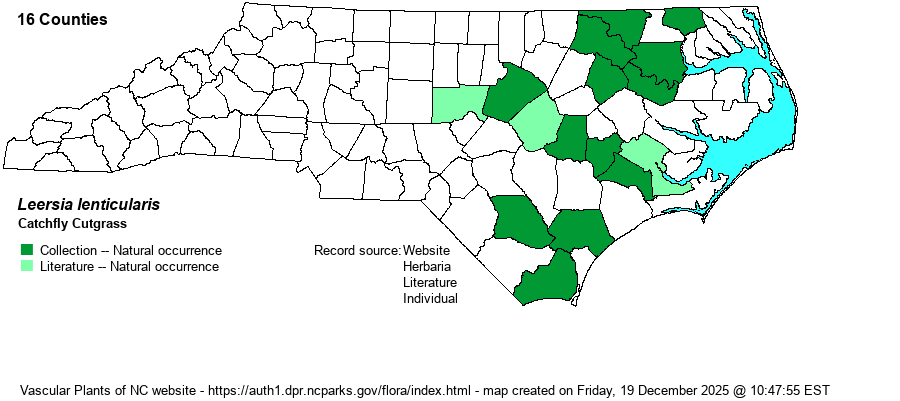| Author | Michaux | |
| Distribution | Coastal Plain; rare in the lower Piedmont (Chatham County). Gaps will be diminished over time with more collecting, though seemingly absent from the far eastern counties; not in the Sandhills.
Coastal Plain, southeastern VA to northern FL and eastern TX; north in the Mississippi drainage to OH and MN. | |
| Abundance | Uncommon, but can be locally numerous along a few brownwater floodplains such as the Neuse and the Roanoke rivers. This is a Significantly Rare species, but the editors suggest a State Rank of S2S3 is more reasonable. | |
| Habitat | Floodplain forests (brownwater and to a lesser extent blackwater) and back-up channels. Various mixtures of Swamp Black Gum--Red Maple--Cypress--oak--ash, with an open understory. | |
| Phenology | Flowering and fruiting July-October. | |
| Identification | These plants generally are 2-3 feet tall, with a terminal inflorescence. The spikelets are pale green to yellow-green, overlapping, rounded, flattened, and bristly on the margins, giving them a resemblance to cultivated rice. | |
| Taxonomic Comments | None
| |
| Other Common Name(s) | Most references use just Catchfly Grass, but the editors and Weakley (2018) prefer to use the "cutgrass" group name for Leersia species. | |
| State Rank | S2? [S2S3] | |
| Global Rank | G5 | |
| State Status | SR-P | |
| US Status | | |
| USACE-agcp | OBL link |
| USACE-emp | OBL link |

